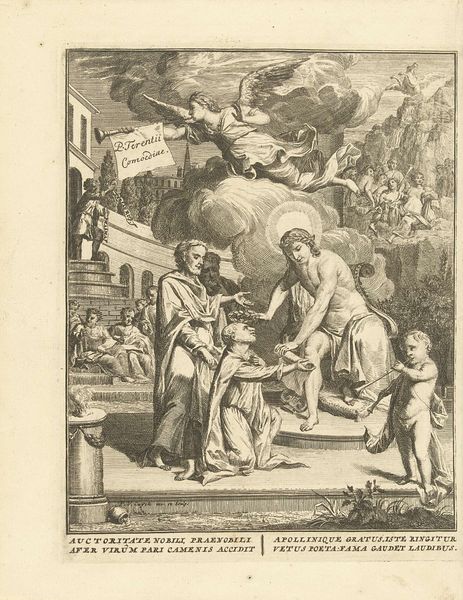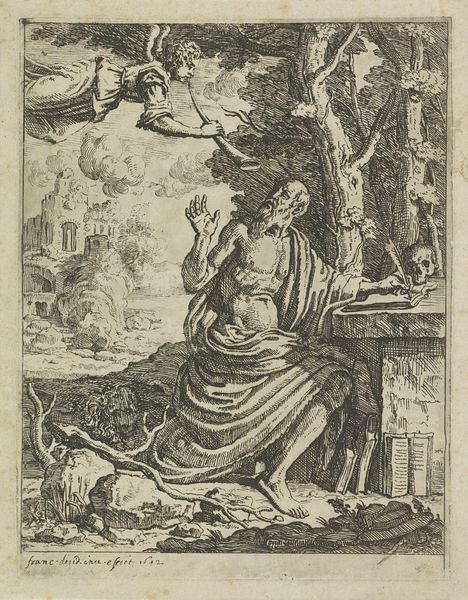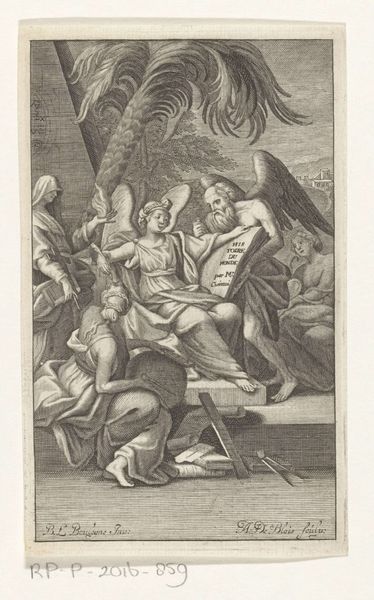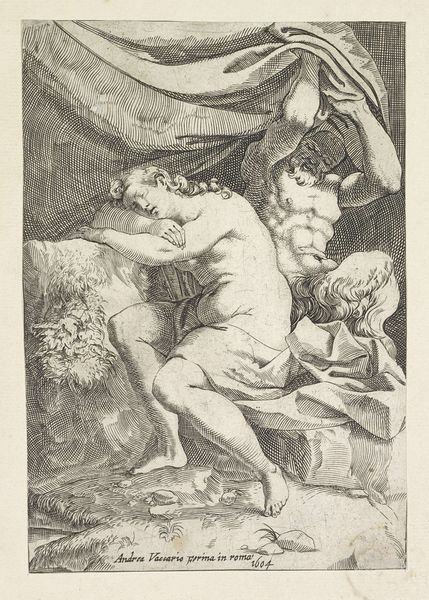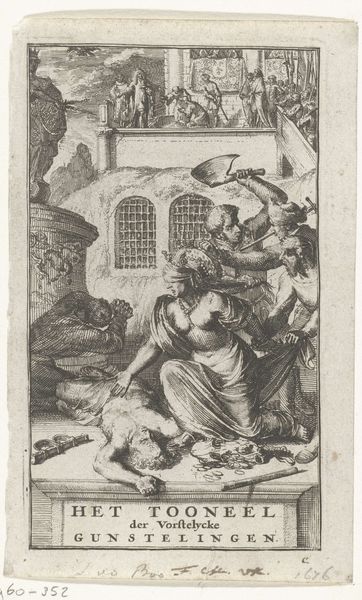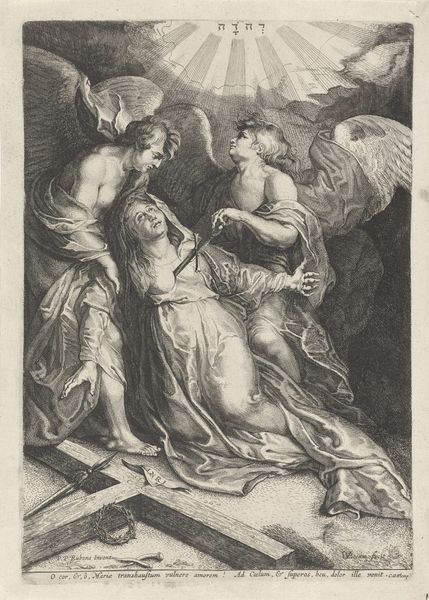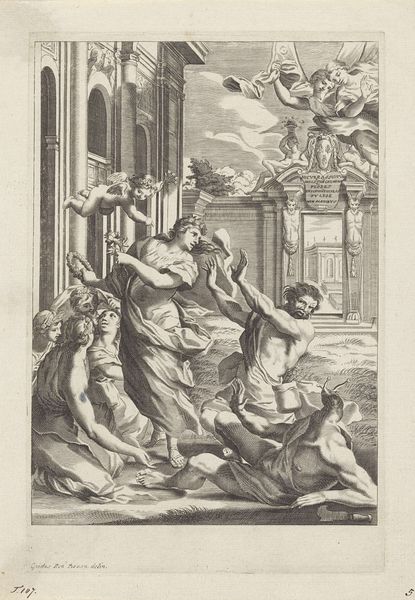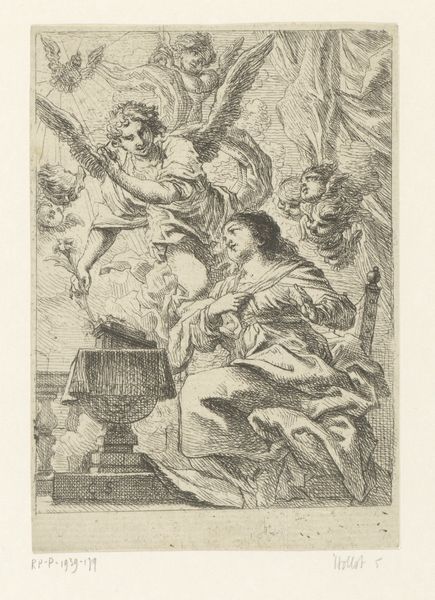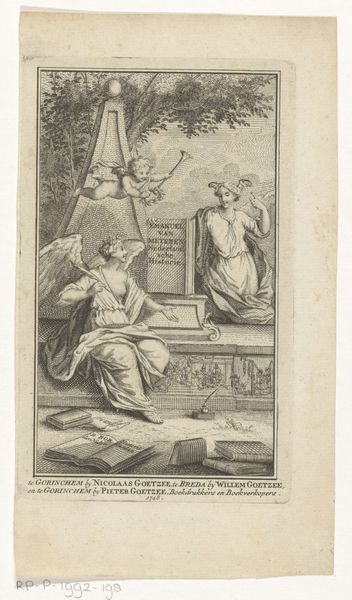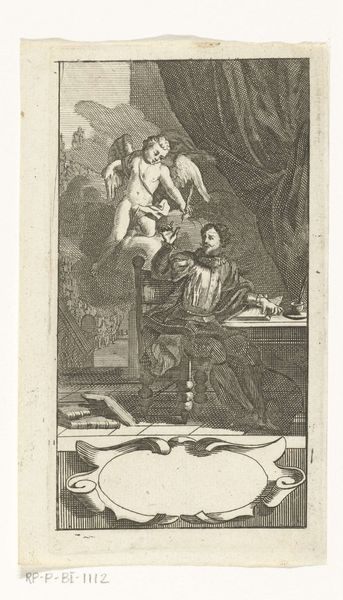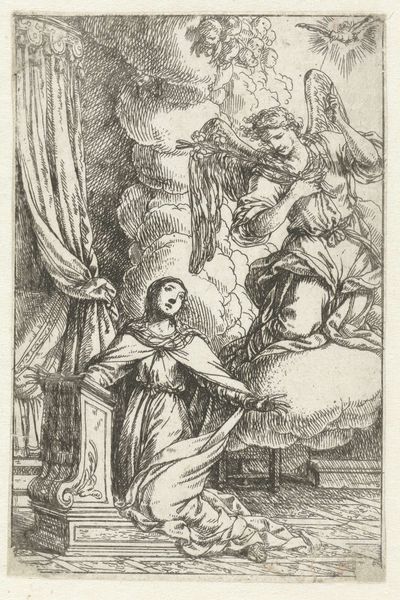
engraving
#
allegory
#
baroque
#
dutch-golden-age
#
old engraving style
#
figuration
#
line
#
history-painting
#
engraving
Dimensions: height 140 mm, width 89 mm
Copyright: Rijks Museum: Open Domain
Curator: Here we have an engraving from 1702 by Pieter van den Berge, currently held in the Rijksmuseum, titled "Allegorical Representation with Father Time and History." What strikes you initially about the composition? Editor: The most immediate sensation is of constraint and imbalance. All these very deliberate lines crowd the frame. There’s also the strange mix of clarity and obscurity in how the details are rendered; a tension created through the labor-intensive etching technique. Curator: Indeed, van den Berge's expert use of line is critical. The crisp precision enhances the allegorical nature of the work, reflecting the artistic sensibilities of the Dutch Golden Age. The line work serves a conceptual purpose; to visually denote ideas. Editor: Conceptually, certainly, the crisp lines signify clarity and definition, aligning with the era’s intellectual currents. However, if we examine it from a material perspective, this work would’ve taken countless hours hunched over a metal plate; physical toil is embedded in every mark. The act of physically carving and manipulating the materials to bring this scene into being. It’s that contrast I can't escape. Curator: I take your point. If you follow the figure of Time’s outstretched hand, though, the visual trajectory takes us to the allegorical figure of History, then, finally to the scene in the background; so in this respect, there is balance in the visual hierarchy despite the constrained field of action. Editor: Perhaps it also points to the artist's workshop, a commercial space for the creation of such detailed and narrative works and prints during that era? How would his clients have valued these visual depictions? Were they bought and sold as standalone artworks, or were these pieces mass-produced on behalf of a client for illustrative purposes? Curator: Excellent question. These prints circulated widely. Notice also how Father Time’s gaze directs us toward a ruined building, alluding to temporality. Even in ruins, there is the evidence of production; history made material through architecture. Editor: I see how even ruin signifies productive histories. The engraver’s mark, labor, allegory, ruin, material culture – everything contributes layers of meaning that transform a simple visual narrative into something that demands active participation from its audience. Curator: Precisely, van den Berge’s command over allegorical language offers layers of understanding that resonate even today. Editor: Indeed, and to consider how materials transform through labor and social use; that brings further texture to an already visually dense print.
Comments
No comments
Be the first to comment and join the conversation on the ultimate creative platform.
